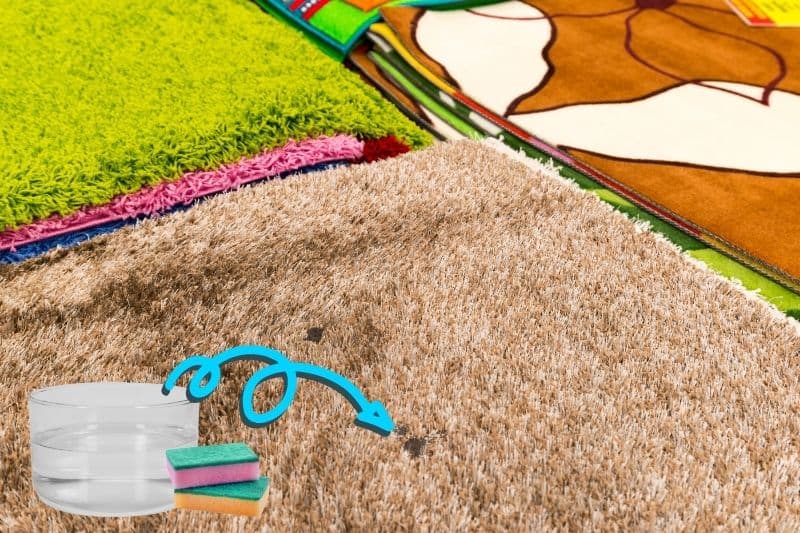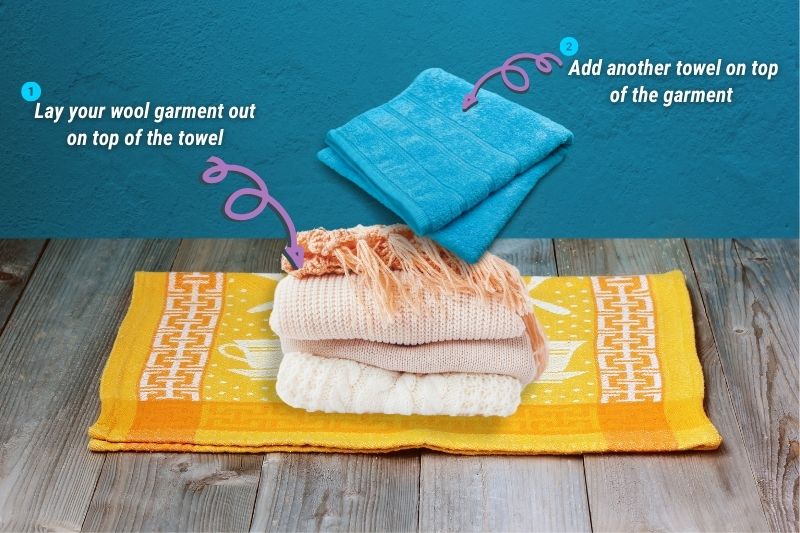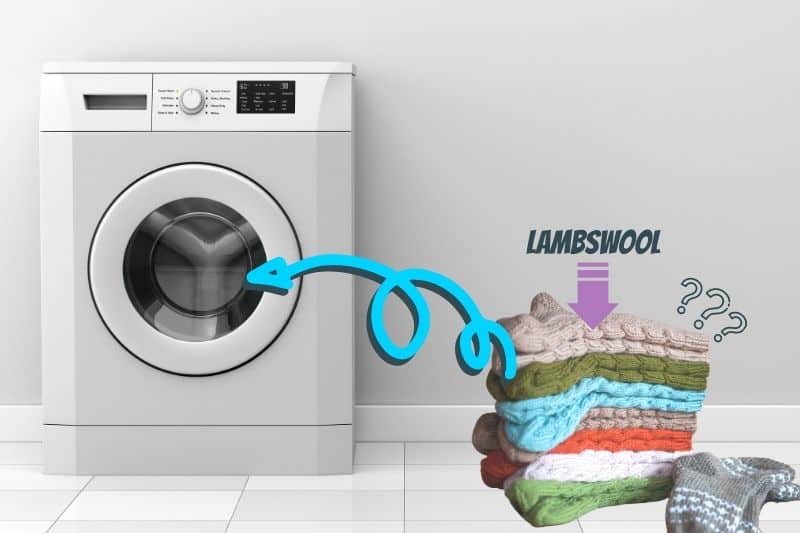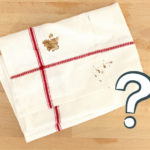If you’ve recently bought a beautiful lambswool jumper or scarf, you may be wondering how best to clean it. After all, you don’t want to do anything that may damage those sumptuously soft fibres.
If this sounds like you, you’re in the right place. Below you’ll find our step-by-step guide on how to wash and dry lambswool at home, plus some of our top tips for best results.
What Is Lambswool?
While you’ve probably heard of sheepskin and merino wool, lambswool is less well known. Essentially, lambswool refers to the first wool sheared from a lamb when they’re about 7 months old.
This type of wool is fine and supersoft as it is much newer than that of an older sheep and it hasn’t had chance to become weathered and coarse.
As a result, lambswool is gentler on the skin and more comfortable to wear.
Can You Wash 100% Lambswool?

Although some lambswool items are treated so that they can be washed in a machine, in general, lambswool must be handwashed. This is because the fibres have lots of protective scales and the heat and tumbling motion of the washer can cause them to cling together.
If this happens, your lambswool garment will likely lose its natural softness, shrink and may even go bobbly. It’s therefore a good idea to check the care label before washing.
If the label states that your lambswool item can go in the washer, turn it inside out and place it inside a laundry bag to protect it. Then, pick a cool, delicate cycle and the lowest spin speed you possibly can.
Tip: only wash your lambswool knitwear when it really needs it to help maintain its softness for longer. Airing is often enough to get rid of odours and most stains can be spot treated.
Step-by-Step Guide to Washing Lambswool
Upholstery and home accessories

When it comes to lambswool blankets and cushions, some of these may be dry clean only and any stains will need to be removed by a professional. However, many other accessories, along with carpets and upholstery, can be spot treated. Here’s how to go about it:
- Fill a bowl with clean, cold water and dip a clean sponge or lint-free cloth into it.
- Gently blot the stain with the water, being careful not to push the stain further into the fibres or rub too hard.
- Repeat the process until the stain is gone and then leave to air dry away from direct heat sources.
Clothing and winter warmers
If your lambswool jumpers, scarves and hats are hand-wash only (as most will be), follow the steps below to clean them safely and effectively:
- Fill a clean washing up bowl with lukewarm water and mix in a small amount of non-biological wool detergent. It’s important to use a specially formulated wool wash that will help to break down food stains, while being delicate enough not to affect the handle of the fibres or strip the wool of its natural oils.
- Next, turn your garment inside out and fully submerge it in the water, leaving it to soak for around 5 minutes.
- After that time, gently squeeze the soap through the garment to clean it. Take care not to rub too hard or wring the material, as this can stretch it and alter the shape.
- Next, check for any areas that need further treatment, such as caked-on food stains. If you find any, lightly massage some neat wool wash into the area to help remove any residue that has attached itself to the fibres.
- Once you’ve done this, pick the item up using both hands and remove it from the bowl. Empty the soapy water out of the bowl and refill it with clean, warm water.
- Place the item back into the bowl and rinse the garment by carefully pressing the soap out of the material. Repeat this step several times until no soap suds are left.
- Finally, gather the item with both hands, lift it out of the water and gently press out any excess water. You’ll then be ready to move onto the drying stage.
Tip: make sure you rinse your lambswool in warm water, as moving it from warm to cold water can cause the fibres to contract which can lead to shrinkage. Similarly, don’t use hot water, as heat can have the same effect.
How to Dry Lambswool

After you’ve washed your lambswool items, you’ll need to dry them flat, away from direct heat. You should avoid hanging them on a clothes line or indoor airer as wet wool is heavy and this will stretch them out of shape.
Using a radiator or tumble dryer is also a bad idea. As mentioned above, excessive heat can lead to shrinkage, pilling and reduced softness. Instead, you should:
- Place a dry towel on a flat surface (such as the top of your dining table) and lay your wool garment out on top of it.
- Next, add another towel on top of the garment and then roll up them up together to press out any excess moisture.
- Once you’ve squeezed out as much water as you can, unroll the towels and smooth out the lambswool.
- Remove the damp towels and lay your item out on a clean, dry towel until fully dry.
After more useful laundry hacks to make your clothing last longer? From how to prevent clothes from shrinking to the best temperature to wash your clothes, learn more on our blog.

A proud Yorkshire lass with a love for movies, music and cosy nights in! Once a self-confessed avoider of cleaning, she’s always on the lookout for new ways to make household chores as quick and simple as possible.






